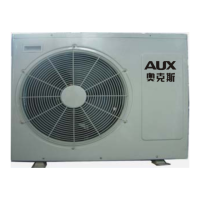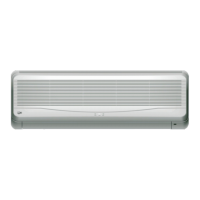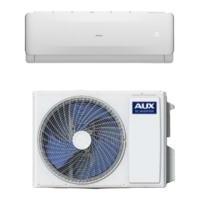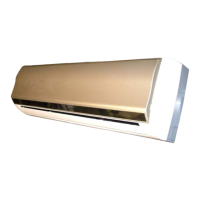AUX air conditioner service manual
⑼Pressure switch
The pressure switch of the air-conditioner is a kind of on-off component that transforms the pressure
signal to be the electricity signal so as to control the air-conditioner. It provides a safety protection to
the operation of air-conditioner. When installation, fix the pressure switch on the pipeline that in need
of supervision and control. The switch’s contact points are in series connected with the main
controlling loop through the lead cables for controlling the on-off of the compressor. The pressure
exerted by the motion of the switch is already fixed on the production line without further adjustment
in application period. When the pressure inside the pipeline is abnormal (too high or too low), the
flexible film flake will react and regulate the scale of pressure inside the pipeline by separating the
standing closed electric contact points through mandril and cut off the controlling circuit.
The pressure switch used for the air-conditioner includes two types: high pressure switch and low
pressure switch. They are composed of the screw joint entry, thin shell film flake, dynamic contact
point, static contact point and mandril etc. Such as the picture 2-16:
The high pressure switch is fixed at the high pressure side of the refrigerating system. It shuts off the
main controlling circuit of the air-conditioner and stops the operation of the compressor in the event of:
the dust accumulation on the condenser’s wing blocks the air path, or the fan is damaged and the air
volume is insufficient, or the refrigerant is overcharged, or the air inside the system causes the
over-high pressure inside the pipeline. It will restart automatically after the pressure drops.
The low pressure switch is fixed at the low pressure side of the refrigerating system. It shuts off the
main controlling circuit and stops the operation of the air-conditioner for protecting the compressor in
the event of: the dust covers the evaporator’s wing, or the fan air volume is insufficient, or the
refrigerant is insufficient, or the surface of the evaporator is frosted, or the system is blocked, etc.,
which may cause the low air-sucking pressure at the low pressure side.
28
